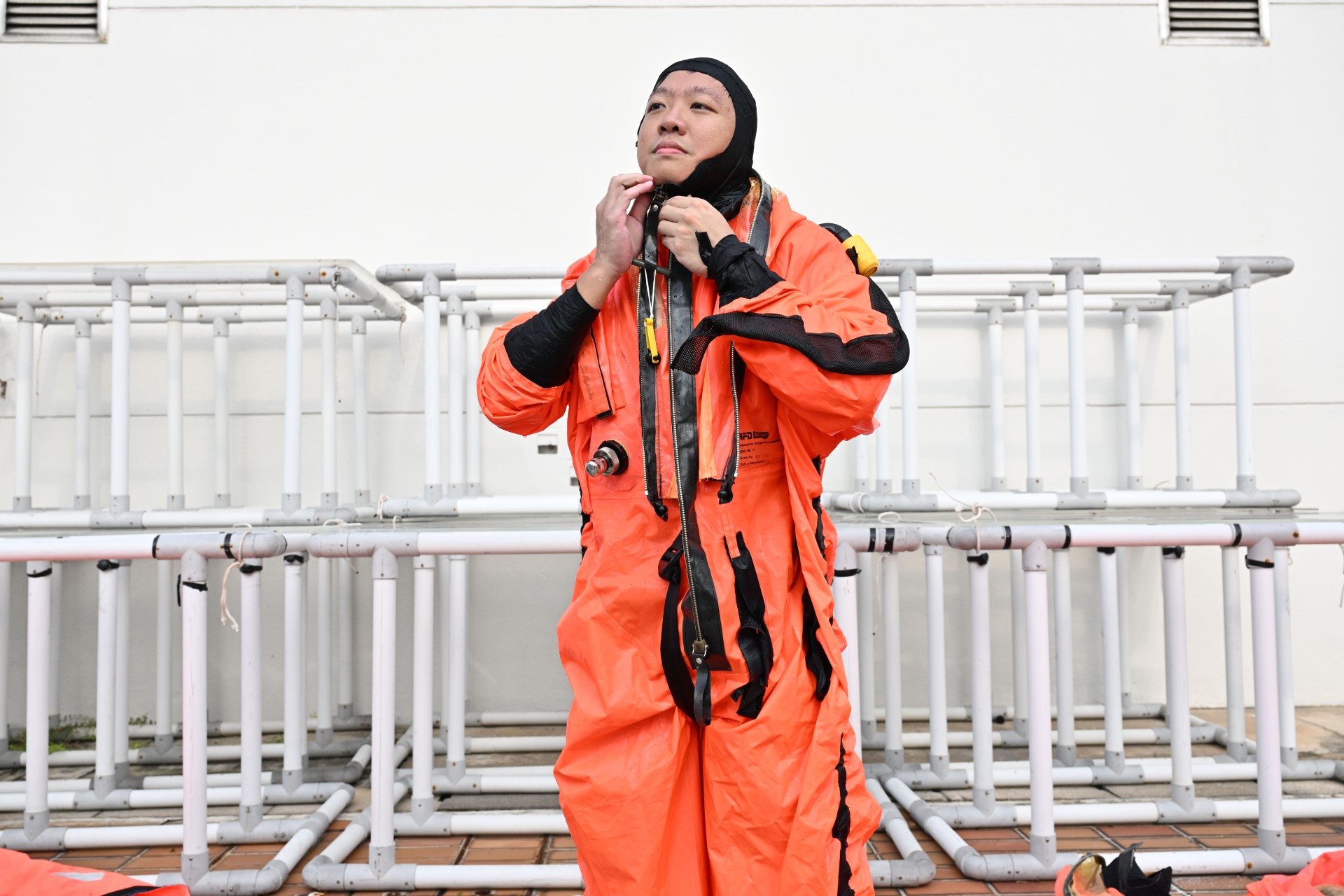OPS & TRAINING
Suited up for submarine escape training
20 Nov 2024
Get an inside look at how the Navy drills its submariners on escape survival techniques, to prepare them for an emergency.

Silent and stealthy, submarines are one of the Navy’s deadliest hunters. But anything can happen out at sea, and despite the crew’s best efforts, a submarine may become in distress and unable to surface.
To prepare for such a scenario, the Republic of Singapore Navy (RSN)'s submariners go through regular escape drills as part of their training.

These include training in escape trainer facilities overseas in countries like Germany.
Locally, the 7th Flotilla’s Submarine Training School (STS) also conducts submarine escape training. It is part of a nine-month-long qualification course to make the cut as a submariner, and is also attended by qualified crew to keep them current in their drills.
Diving Regulator Training
To be able to operate underwater, all submarine trainees must be comfortable breathing through a diving regulator.
In this drill, trainees practise locating and breathing through regulators as they move towards the “escape hatch”.


The exercise is repeated with a “blindfold” to simulate conditions where visibility is low.
This could happen if the submarine is flooded or if there is smoke in its cabins.
Surface Survival Drills
During an escape, each crew member has a personal Submarine Escape Immersion Equipment – which includes an escape suit and a life raft.
The bright orange suit is a full-body garment designed for pressurised escape. It includes a life jacket and comes with thermal protection.
Trainees practise donning the suit quickly and efficiently as they would in the escape chamber.


Before they exit the submarine, they inflate their suits with air, allowing them to quickly rise to the surface.
Trainees then deploy the single-man life raft, which can last for more than 24 hours out at sea as they await rescue.

Instructors drill them on entering the raft – a challenging task which requires good timing and coordination, especially during rough sea state conditions.
The instructors will also topple the life raft over, teaching the trainees to escape and re-enter the raft when needed.
When training in larger submarine escape trainers overseas, trainees can more closely replicate the actions they have to take in escaping a disabled submarine.
These include training in countries like Germany (as well as Australia and Sweden in the past) – where they have a water-filled training tower with an “underwater entrance” at the bottom to simulate an airlock in a submarine.


Tower Drills
Trainees are also taught to conduct a free ascent, in case there are problems with the suit.
Under the supervision of instructors from the Naval Diving Unit (NDU), they dive to 6m underwater and slowly ascend to the surface without the use of the diving regulator.

Instructors ensure that they consistently release bubbles of air, as well as pressure through their ears, during their rise to the surface.
Holding their breath would be fatal as the air in their lungs expands when they ascend.
By repeating the drills, trainees hone their ability to control their exhale and to remain calm underwater.
Submarine escape training is just one component of what it takes to don the submariner badge (also known as the “Dolphins”). What else do trainees undergo to become underwater warriors? Watch to find out!
ALSO READ IN OPS & TRAINING

Exercise Wallaby 2025: To see better, shoot faster
31 Oct 2025
The SAF focuses on complex strike missions and multi-domain integration in Exercise Wallaby 2025, the 35th edition of its largest unilateral overseas exercise.

Ex Wallaby 25 – Greater Integration and Complexity
25 Oct 2025
The 35th edition of the SAF’s largest unilateral overseas exercise is an opportunity for expanded scale and deeper integration towards an effective, networked fighting force.

Ex Forging Sabre ramps up use of unmanned assets in integrated strike operations
12 Sep 2025
In this 10th edition of Exercise Forging Sabre, the SAF sharpened its cutting edge for the dynamic modern battlefield, with expanded integration between manned and unmanned platforms.


